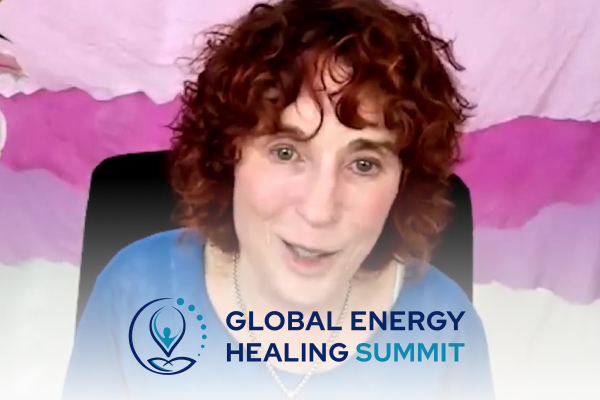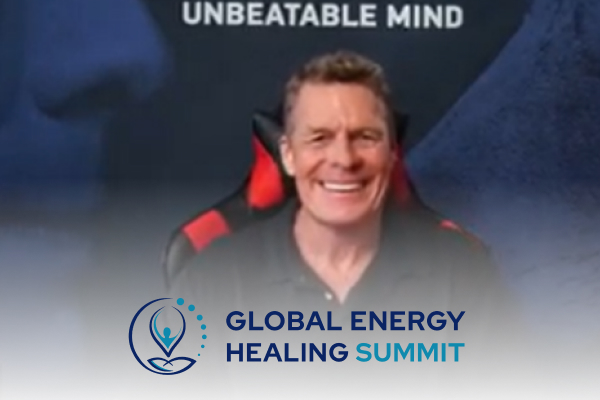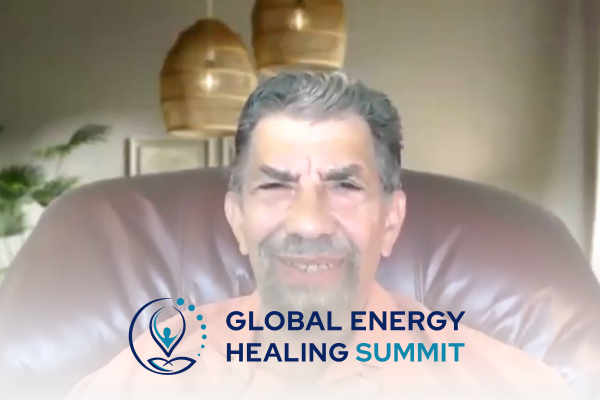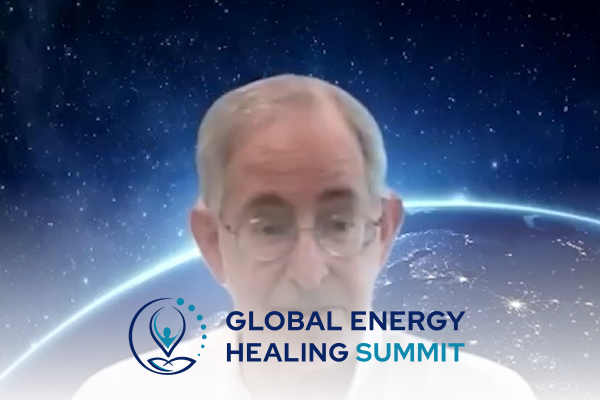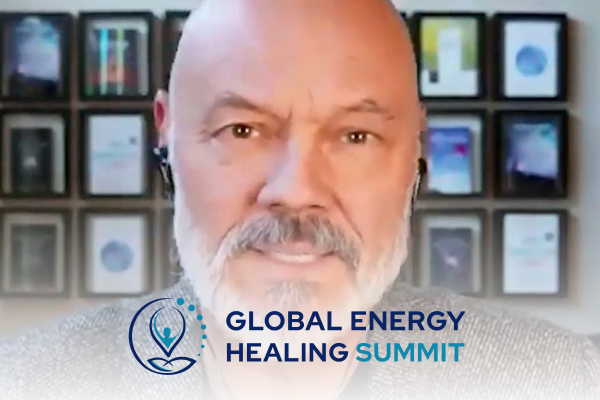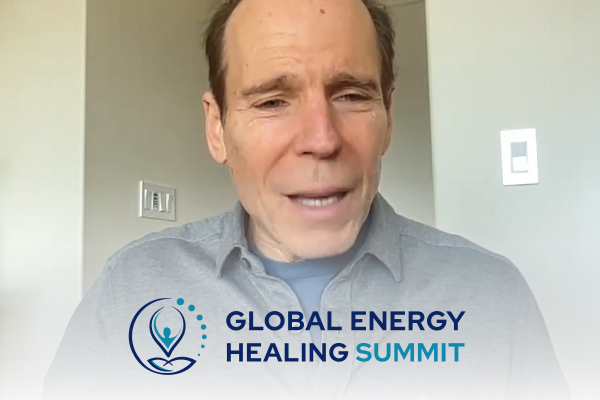Join the discussion below
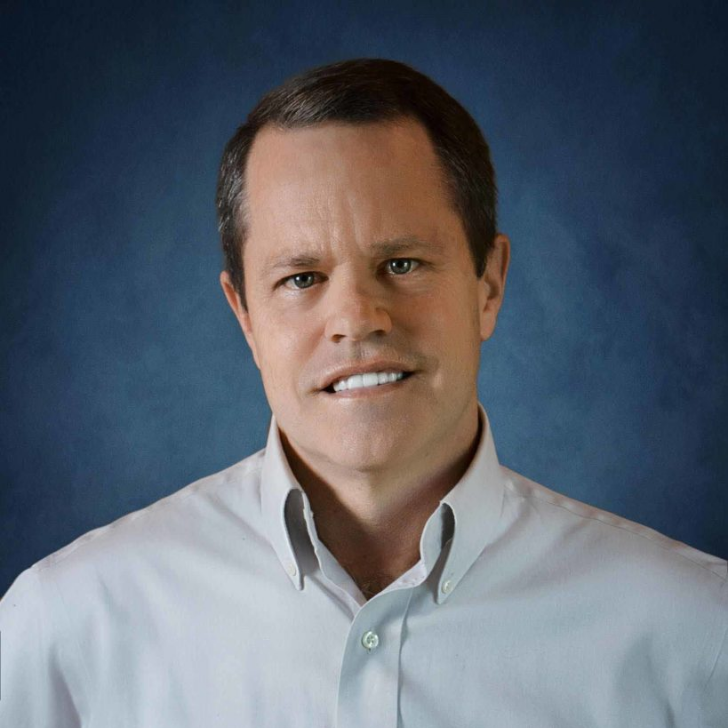
Tom McCarthy is a husband, father, author, speaker, entrepreneur, and investor who has owned businesses in the training, software, financial services, and restaurant industries. Tom’s clients in his training business include some of the worlds leading companies such as Cisco Systems, Microsoft, Salesforce, Wells Fargo, and MetLife. His latest book,... Read More
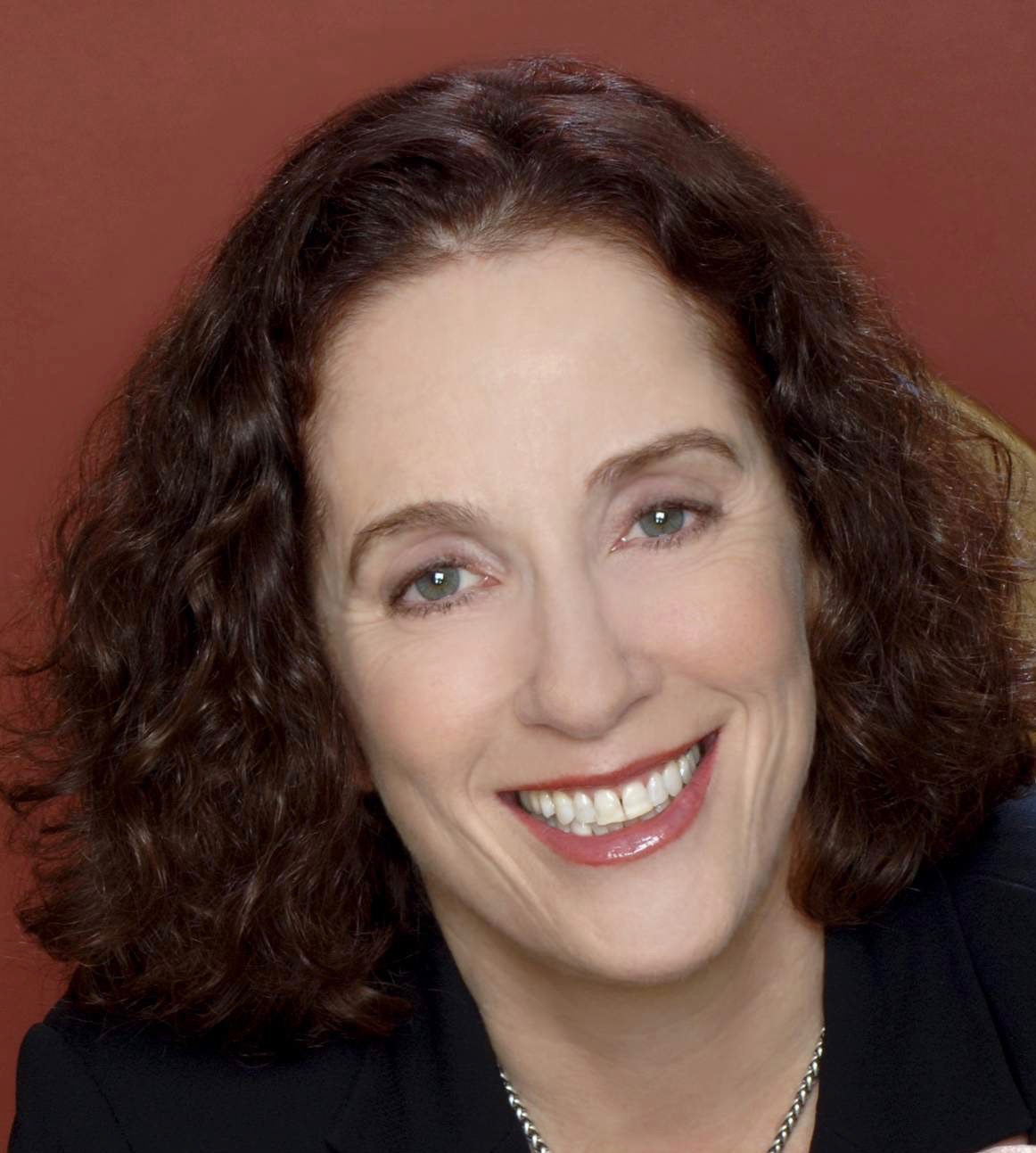
Anat Baniel is the founder of Anat Baniel Method NeiroMovement, a cutting edge, holistic approach to human functioning based in neuroplasticity, movement, and learning. She is the author of the bestselling book Move Into Life and Kids Beyond Limits. Her .work is at the forefront of movement science and applied... Read More
- The brain constantly changes in response to its experience.
- The brain is the master (CEO) of all that happens in our body and mind.
- Movement (and its associated sensations) are the “language of the brain” and drive the formation of the brain.
- The brain plays a central role in healing.
Related Topics
Brain, Brain Health, Brain-body Connection, Energy, Feldenkrais Method, Healing, Learning, Movement, Neuroplasticity, Pain Management, Rehabilitation, SensationTom McCarthy
My next guest is someone that I am proud to call a friend. She is somebody that’s actually helped me too. I’ve been up to her clinic, up in the Bay Area, north of San Francisco and I was having some pain in my legs and she worked with me for, I think maybe two sessions, two days, but it was fantastic. I mean, it was really, really helpful. And so I’m happy to be able to introduce her to all of you today. Her name is Anat Baniel and her center is called the “Anat Baniel Method NeuroMovement.” Well, that’s not your center, but that’s what she does is about neuro movement. And it was really cool when I was up at her center, the eclectic group of people that were coming in, ’cause some looked fit and healthy and wondering why, you know, why are they even there? But she works with musicians, she works with athletes, people that are high performance, but then then it was also interesting because there was children that had different needs that were coming there too and I got to sit in the waiting room with some of the families and talk to them. And these children had been impacted maybe at birth or born with different conditions. And it was just phenomenal to hear the parents talk about your work Anat and how much you were helping their children. So I’m just really excited to have everybody learn more about what you do. So welcome to our summit.
Anat Baniel
Thank you, thank you, Tom. And I’m really happy to be here with you and to introduce and have this conversation with you and the audience that will listen.
Tom McCarthy
Yeah, so talk a little bit about your work. Let’s start from the concept of the brain. One of the things you say is that the brain is the master CEO. Like it’s in charge of everything that happens in our body and in our mind kinda take us through that concept a little bit.
Anat Baniel
Okay. So when I say the brain is in charge, actually, it’s a really massive collaborative project between every part of ourselves and the brain. The brain is part of us, it’s part of the body and its relationship to the environment. So for example, the gravitational field is always there unless you’re an astronaut and go out to outer space and that’s a big job to manage that, right, when you move? So basically the brain, we’re born with about a fifth of our connections, I mean, more cells can form, we know that now, but the baby’s born with about 22% of the size of the brain in the sense of connections and it’s going to grow another 4/5, another 80% roughly.
Tom McCarthy
Wow. Wow.
Anat Baniel
So that’s massive. And the human brain has that more than any other, you know, brain of a vertebrate beings. That means we’re really, really, really dependent on learning. But it’s not like they’re little units of learning that get fit into the brain, it’s through a lot of experiential things that happen as the baby moves and things happen, the sensation in the body changes and so on. And really the connectivity between the periphery and the brain gets formed through movement and the sensation that comes with it. And gradually the brain, actually very quickly, the brain starts putting together configurations. What I say that the job of the brain’s to put order the disorder and make sense out of the nonsense. So when you show a letter A
Tom McCarthy
Hold on a second, just to repeat that. Make order out of disorder and make sense out of the nonsense , that’s pretty cool.
Anat Baniel
That’s the bottom line job of the brain. This is it. And so in the beginning, it has, you know, reflexes, I mean, it has what it has at birth, but immediately learning starts happening, and it has its own rough order in which it happens. The learning includes connectivity between the periphery to the brain itself, into the motor and sensory areas, other areas too, and they estimated the average for children of rate of growth of the brain, when, you know, things are working right is 1.8 million new connections per second.
Tom McCarthy
Wow .
Anat Baniel
Now it doesn’t happen all the time. So I say under the state that the brain is in a learning mode, that’s the rate of change. So it’s almost instantaneous. The grooving of learning takes time, habituating what you learn, but the changes are almost instantaneous. I like to call it quantum, even though the word has been abused a lot,
Tom McCarthy
Overused a little bit.
Anat Baniel
And I’m not sure it’s correct for the brain, but I suspect it is. And once the brain figures something out, then it’s in charge.
Tom McCarthy
Okay.
Anat Baniel
And it is responsible to keep us alive. So every part of us is important. And bottom line, you want a really good brain that learns really well, that forms really more optimal configurations rather than patterns that are not working so well or self defeating. And I discovered unintentionally that activating the brain into the kind of learning that, you know, I believe my work does, it really instigates and accelerates healing.
Tom McCarthy
Yeah, absolutely.
Anat Baniel
And that’s when I realized, and I can tell a little story, I realized that even though we look at the periphery, and I tell the story in a second, it’s really up to the brain to decide if something’s gonna heal or not. So my father in his ’60s broke his leg, it was pretty bad break, they put a full cast on his leg. Muscle atrophy of an injured area of the body happens pretty much the full atrophy, 72 hours.
Tom McCarthy
Wow.
Anat Baniel
Now, if you have a cold and you lay in bed for 72 hours, you’ll feel a little weaker, but your muscles won’t go through that atrophy. That means it’s a proactive process that is managed by the boss.
Tom McCarthy
Yeah.
Anat Baniel
And we’re thinking about that my father was in Israel and I live here in the United States and he has done my work, and he’s also a very bright man. So I gave him a task, I sent him recordings of certain movement sequences to do on the side that’s not broken.
Tom McCarthy
Yeah, on the side that’s not broken.
Anat Baniel
Exactly, because that’s the side that the brain is available, it’s not defending yourself. What’s atrophy for? To inhibit, eliminate movement if you think of it functionally, right. And then I said to him, once you do that, imagine doing the movements on the other side, don’t try to do it because you have a broken leg, you’re not supposed do it.
Tom McCarthy
Right. Right.
Anat Baniel
If you have a healthy brain, your brain doesn’t wanna move it. So don’t go against the biology, but trick the brain, right, in imagination it’s safe to do it. I also had him in his imagination paint the bones of the legs, like in his imagination, white and solid, there’s a few other elements that I put in there. He had to have his cast changed, I don’t know, three months or something into it. He had zero atrophy of the muscles.
Tom McCarthy
Wow.
Anat Baniel
Anyone that knows rehab knows that one of the problems with rehab is that the parts that are injured atrophy and they don’t just atrophy peripherally, the connections in the brain, the patterns in the brain, especially if there’s pain, retract. So the area becomes more diffused again in the brain, rather than defined with those, you know, patterns. And it’s kinda like the brain doesn’t have another brain telling it what to do. So it does what it’s built to do. Not safe, reorganize the whole system to continue functioning as best as it can, and forget the part that’s not working. Get it out of the picture, rearrange the whole picture. And that’s where a lot of the risk lies. So actually a mutual friend of ours, I just found out two nights ago that she, something happened and she, by now has the pain for maybe three months where she has it. I said, we need to do something because this is becoming chronic. What makes it chronic? The changes in the brain.
Tom McCarthy
Yeah.
Anat Baniel
So that is-
Tom McCarthy
Even when there doesn’t need to be pain there anymore, if the brain learns that, you know, to create pain it can keep creating it, right.
Anat Baniel
Yeah, exactly. It becomes, because we have such intelligent brains that we learn fantastic stuff and we learn, excuse my language , we learn crap.
Tom McCarthy
Yeah, yeah.
Anat Baniel
And we don’t know because it’s all, most of it is done without us even knowing.
Tom McCarthy
Yeah, that’s awesome. So one of your early mentors, a lot of people probably heard about the Feldenkrais Method, and so you worked with Dr. Feldenkrais for 10 years, I think?
Anat Baniel
I worked with him as an adult for 11 years-
Tom McCarthy
11 years, yeah.
Anat Baniel
I met him at my parents’ home because he started experimenting with his movement lessons when I was three-
Tom McCarthy
Okay.
Anat Baniel
My father, he was a brilliant scientist and he met him and Feldenkrais looked for people to experiment on. So my father brought 10 of his researchers, and I used to just roam while he was there and I remember it very vividly. And then I did his work through my dance teacher as a child and that’s when I experienced the magic, you know. I would do a lesson, I’d come, the next day we had the PE and I could do things I could never do before. I could just do them.
Tom McCarthy
So how how did his work influence you? Like, what from his work has influenced your work? What have been the biggest influences, just curious?
Anat Baniel
Well, nobody’s ever asked me these questions. That’s very interesting, in all those years. Well, I was in grad school to become a clinical psychologist and I decided, and I was also a dancer and, you know, statistics and all of a sudden I felt I want something more biological, something more immediate to our experience through movement. And, you know, studying psychology was extremely useful for me, but anyway, and then it took me a while and I remembered the lessons I did as a child with him. And then I went and met him and he had no training so I just started taking, I didn’t have that much money, but I took about, I think I had money for eight private lessons. I got the first one. I had no idea what the man did, but it transformed me. I mean, and I thought, “That’s it. “This is what I wanna learn.” Now, what did I get? I started from places that maybe are unusual.
I got complete freedom, freedom to feel, freedom to think, freedom to connect human behavior to the understanding of the brain, so wasn’t divided psychology, physiology, even though all those elements are in there. And then I got tools to connect with people and interact with them, provide them opportunities through direct, direct connection through movement and sensation, but I also, as you can see, I’m also very, kind of, cognitive right, and found an approach that had real integrity. And also what I realized very early on when I studied with him as an adult, is that in psychology you kind of have to have a problem to get into therapy, roughly speaking.
But in my work, that’s one of the things I took, anyone can use it because it opens up the process of what I call organic learning, like the way children learn. So one of the things that happens to us as we grow, grow up and then grow older, is that we already have reliable ways of doing things. There’s the demands on us to perform and the brain is super lazy if you let it be. It goes like, “Oh, I know how to walk. “I know how to stand. “I don’t have to look into it again, it’s working.” And this opens the process and people, the way I say, my work helps people come home to themselves and become more of who they were born to be.
Tom McCarthy
Okay, so come home to themselves and more?
Anat Baniel
And become more of who they were born to be.
Tom McCarthy
Who they’re born to be. That’s beautiful, yeah. Hey, when you, so you work with stroke patients, you work with people whose brains have had challenges like children, and I’m sure just all sorts of different, it’s not just one type of developmental challenge you’re working with. But the interesting thing about when I was there is that your work is very subtle, yet very powerful. Like, movement that you’re teaching, you’re saying go slower, notice, let your brain notice the movement versus, you know, like stretch really, you know, stretch really dynamically. It was fascinating. What are you doing with stroke, like what’s happening with someone who’s had a stroke that you’re helping to retrain their brain or a child who had some developmental challenge or trauma at birth where the brain wasn’t getting what it needed. What’s actually happening under the hood there when you’re having them do these movements.
Anat Baniel
Well, so I say, movement is the language of the brain. The brain is fundamentally built to organize movement, or to organize action if you want say that way, right. So the brain gets its, and the brain, I’m just gonna say it in one statement, is an information system it’s not a mechanical system. My arm, you know, needs to straighten, it’s a mechanical, it has weight, the muscles are like levers and so on. But the brain organizes function, brain is an information system.
It gets its information, it took me a bunch of years to figure that one out, and it’s so straightforward and simple, in my language through perception of differences in what it perceives. So stimulation is necessary for the brain to have information, but the stimulation alone is not information. It’s actually noise, what’s in neuroscience called just noise. What gets the brain an opportunity to get like, let’s call it just bits of information is that I feel the difference between this and between this.
Tom McCarthy
Okay.
Anat Baniel
If I don’t feel the difference-
Tom McCarthy
The difference the brain feels that then-
Anat Baniel
Yeah, and it doesn’t have to analyze it. Infants don’t analyze their movement, but it feels very different. When people, for instance, has a limitation due to stroke or something like that and they lost connections, they lost connections in the area that controls arm and so on and so forth. People try to stretch it because it’s spastic because it’s lost differentiation. You see the connections, the many, many connections allows for more and more refinements, you know, of how you can move things one relative to the other. So it’s in a sense, our existence is in the relationship, in the dynamic relationships that occurs as they occur, right, I’m speaking you language, I stop saying the word it’s gone, right.
It’s a little up there, this kind of conversation, but what happens, so if you tried to stretch the arm, you think of it mechanically say, “Oh, it’s short let’s just push it.” A whole cascade of stuff happens that actually triggers the brain to, in this case to contract it more, but there isn’t a learning happening. I’m not interested in a specific outcome, in a specific moment, I’m interested for the brain to wake up and do its job. When I slowed down, fast the brain can only do what it already knows. So athletes, when they do that thing.
Tom McCarthy
So it’s really important. So I listen to what you say, going fast, the brain can just do what it already knows, slowing down, allows the brain to process and learn.
Anat Baniel
There’s time to feel. Have you ever seen the Pope going like that with the crowd? Never. How does he go? Pristine movements, slow. He gets the whole crowd’s attention. Slowing down is a path to getting attention, which is very important for the process to happen and it gives time to feel, to notice.
Tom McCarthy
Yes.
Anat Baniel
So what I would do is if I were to move the arm, first of all, I go really slow, then I’ll go gentle. Why? Because if right now we have a really loud truck behind us and I will talk at this level that I talk you wouldn’t hear me.
Tom McCarthy
Right.
Anat Baniel
It will drown the sound. That means that the ability of the brain to perceive differences increases logarithmically, that means like an exponentially, right, logarithmically, as you reduce the background noise, as you reduce the effort, the intensity of the stimulation, which is exactly opposite from what people think. If I want you to feel it, I’m gonna go harder. I mean, you might feel the hit, but you wouldn’t learn, you wouldn’t get information to work with. So if you look at the , for example, he goes slow, he’s very attentive and he has a chance to feel more and more of what he’s doing. That’s the expansion of awareness. And that’s one of the things, because my teacher was a quantum mechanics physicist, Feldenkrais, what was I gonna say about that, it was very important let me just remember.
Tom McCarthy
Just the slow movement and the-
Anat Baniel
Yeah, but, oh yeah. What he said, and it took me a bunch of years and I talked to a bunch of physicists, he said, “All living organisms self-organize, “and all parts in our body self-organize.” Cells, you know, if you know the lives of a cell, right, cells organizes, the liver self-organizes, the skin self-organizes. I mean, it has enormous amount of organization to it, and the quality with which each part self-organizes can vary, can be done better or worse, right.
The brain is the one organ in our body that can self-organize itself, upgrade itself to higher and higher levels, you can call it levels of energy, think light bulb and the kind of light if you wanted to do surgery on an eye with a light bulb, you’ll just burn the eye. You have a laser beam, you get it to such a degree of organization that you can control and it is not going to burn the eye. I call those the essentials, I just described two of them. We upgrade the quality with which the brain works. That’s what I had my father do by using imagination, by slowing down, by doing it in the part that’s easy, not going towards hard so the brain can figure it out and transfer it to the other side. You see the learning?
Tom McCarthy
Sure, yeah.
Anat Baniel
And that has huge healing impact. Using this process, heals peoples. The children that I work with, you know, in the beginning, when I started, you know, they used to have colds and then the colds disappeared. I never worked on a cold and I didn’t dare tell people about it because I thought, you know, maybe I’m wrong, maybe I’m wrong. But I also was afraid that that would be completely discarded because I would sound like, you know, crazy person talking about stuff, right. And I had broken bones. I had a boy that broke his arm, wouldn’t heal. And they did even, I think they put, how do you call it pins and stuff and it still didn’t heal. I mean the bones didn’t fuse together. So the mother brought him to me and I said, “I have no idea, “I’ve never tried to heal bones.” But I worked on him and got him to feel and refine all the relationships from the feet through the pelvis, through the spine to the arm, without touching the arm and the bone healed in nine days.
Tom McCarthy
Wow. That’s amazing. What are some of the other things you’ve seen? So when you work with a stroke patient, a lot of people think that you have a stroke, and then there’s a certain period of time where you either, you know, you have a certain level of recovery or you don’t, but then you’re done. You probably get people that come to you after that length of time and you’ve had some amazing results, or children that their doctors say, “Look, this is the way it is,” and these are children with developmental challenges, right, where maybe they can’t speak, or they have a hard time operating functionally in the world with their body.
And those are the types of children that I was seeing coming to your clinic the couple of times I was there, and their parents were just talking about amazing results. But what are some examples of things that you wouldn’t have thought could happen and most doctors or people that work in that realm don’t think it could happen, but you know that by using the body to manipulate the brain you can create those changes in the brain. What do you see, what are some interesting things you’ve seen happen?
Anat Baniel
Oh, well , so that’s what got me so passionate about the work and so committed to try to bring out the ideas. So I’ve seen, wow. The very first child that I worked with that was very, very seriously impacted, she had the diagnosis of global brain damage, which means, what does it mean? Nobody went into the brain and saw global brain damage, but they saw that she couldn’t do anything, right. So her prognosis was global brain damage. She was 13 months old, she was both spastic, you know, especially on one side, one eye was not coordinating with the other eye, she couldn’t even roll from the back to the belly. You put her on the belly she screamed like there’s tomorrow, that means it was painful for her. She just didn’t, she was able to be held that’s it, you know.
And, of course, movement begets movement. The reason a child starts learning to move is because when they’re born, they have a lot of random, unintentional movements, but those movements create sensations and outcomes, you know, they bang into something, they feel that, and the brain was like, “What just happened?” And they learn very fast, but movement begets movement. So I started working with her and she was very, very impacted, so she didn’t like immediately roll, or immediately crawl or immediately stand. But that’s, again, if you, what I was looking is to see if there are changes, if the brain is learning, if the brain is responding? Fast forward, she’s married, she has two master’s degrees.
Tom McCarthy
Wow.
Anat Baniel
From Boston University and another good one, I don’t remember the name. She has a little small business, you know, training housing dogs and she walks, she talks and they discovered later on, they did an MRI that she’s missing 1/3 of her cerebellum. It’s just a fluke, it’s called the cerebellar hypoplasia. And if she had not gotten the work, the doctors were right, because they didn’t know what to do with her. They tried to put her on the belly. They tried to put her sitting, but there weren’t the underlying connections and opportunities for the brain to figure out how to do it.
Tom McCarthy
A really great thing is that, as you said, you probably didn’t even know what to do when she came in, but you’re curious and you’re creative and you try things and experiment, and you’ve got this great mechanism that’s giving you feedback, you could see if there was learning or not. And now here she is this little girl.
Anat Baniel
Exactly, you’ve got it.
Tom McCarthy
Yeah.
Anat Baniel
And now, because of COVID, I want to mention it, you know, so the adults too, but the children, you know, the system matures, whether it is evolving or not, and then it sort of closes itself down more and more, and that’ll get me to something too, that you asked about stroke. So I said, what are we gonna do? We can’t see the kids, nobody can travel to see us, the parents are stuck, everybody’s stressed. So what are we going to do? And I just dreamt up a new program called “Coaching” you know, NeuroMovement coaching for caregivers and parents. But I didn’t focus on the children because I can’t tell them over the internet how to do what I train people over, you know, 110 days of training, right, I mean, it’s not gonna happen.
But those essentials that I defined, that means the conditions that are really fully supported by the last 20, 30 years of neuroscience research, I can coach them to implement those essentials with what they already do with the child, feeding, talking, teaching math, whatever you do you can apply it, because it has to do with human activity. And initially for the parents it’s disorienting ’cause the child has the problem why am I focusing on them? You know, because we focus on the problem, we don’t think that we have a role in it, and we have a huge role both towards ourselves and towards others. So, and then the kids start coping. One kid started climbing up and downstairs another kid started talking, many kids get calmer, they’re easier to learn, and the people that change are the parents. I now call it my “One Brain” proposition, that when I’m with you and you’re with me, we’re one brain in two heads.
Tom McCarthy
Yeah, I love that.
Anat Baniel
At least to some extent. If you’re interested, I have a webinar that I did with the scientists from Rutgers a brilliant neuroscientist and computational scientist that tries to change how therapy rehab and all this stuff is done. I put there a short video of a mama dolphin, and a baby dolphin swimming. And that’s totally connected to healing. So it looks like the dolphin does this thing with it’s tale and you think, “Oh, look at this cute little thing, “it can swim.” If the mama dolphin, something happens to her and she’s gone, the baby dolphin will sink and die. Three months of that, okay. When I work with a person and they meet, for me learning and healing are almost the same thing, I mean, learning leads to healing, the thing that happens is, I’m one brain with that. And if I’m in charge, I’m responsible to connect to them so they, I match them rather than expect them to match me. And then I can take them with me in my stream.
Tom McCarthy
Yes.
Anat Baniel
And that’s what we teach parents to do. And kids thrive, it’s just, and I just talked to the school district in Canada today, how to continue the program because of COVID and all that stuff, it’s a wonderful guy, the superintendent there. And we did research, we collected, they in the year of COVID had, and also the first year, but 40% reduction in highly disruptive behavior in classrooms, as long as it was in class and better outcomes in the tests in math and reading, writing. Better outcomes, they’ve been applying this work in the school.
Tom McCarthy
That’s great. Hey, if anyone is listening to this Anat can help anybody, but who knows a child that has developmental challenges, you have to reach out, you know, let that person know about Anat, have them connect to her through her website. What’s your website Anat, how can people find you?
Anat Baniel
It’s www.anatbanielmethod.com, it’s my name A-N-A-T-B-A-N-I-E-L-M-E-T-H-O-D.com.
Tom McCarthy
Anatbanielmethod.com, yeah. Hey, Anat can you give us a little bit of an experience of your work?
Anat Baniel
I would love to do that. I want to say two things briefly. One is, I just, we we just emailed today, I created a course that’s gonna be 10 weeks online for parents and for therapists, how to use the nine essentials in my thing that I call “From Fixing to Connecting.” So it’s gonna start in a month, exactly so if people are interested. And to answer your question about stroke, there’s no question that catching it sooner is better than later. Because as I say, brain forms itself, it learns it’s experience.
But I have a feeling even on that, both on a child with brain damage and a young adult woman, 27 years old, they’ve had a massive stroke and I got her after she was graduated four months, I think, after it was done, she couldn’t speak, she was aphasic, it was on the left side of the brain, she could walk with a cane and spastic, and pain, and numbness and all that stuff. And she, actually was Jill Bolte Taylor that recommended that she come to us. I wish I’d gotten her right away because the arm got somewhat into function, but it was not as amenable, but the walking, everything, she is a practitioner, she took the practitioner training program, and she’s a mom, she’s married and a mom.
Tom McCarthy
Oh, that’s awesome. And now she’s actually using your work to help other people, that is really beautiful. Show us a little experience of your work.
Anat Baniel
I’d love to do it.
Tom McCarthy
People are probably sitting down-
Anat Baniel
Exactly, let’s do something with the sitting. And most people are miserable or somewhat miserable at times was their neck and shoulders, right.
Tom McCarthy
Especially now with us in front of screens for the past year and a half.
Anat Baniel
Yeah. Okay. So I’m gonna ask you to do it, so you’re gonna be the model for them, and I might give you a little of feedback.
Tom McCarthy
Actually standing but I’ll still do it, yeah.
Anat Baniel
Oh, okay. That’s okay, you can do it, it’ll be the same thing, but it’s important that you have something to lean on? Do you have something you can actually lean with your hand?
Tom McCarthy
Back or forward? I’ve got a little desk in front of me here.
Anat Baniel
You can lean forward if you’re standing. It will still work, okay. So first of all, you in standing, other if you can take your shoes off, if it takes like two seconds.
Tom McCarthy
My shoes are off, yeah.
Anat Baniel
Perfect.
Tom McCarthy
Everybody else take your shoes off, please.
Anat Baniel
Don’t take any other thing off, but just the shoe.
Tom McCarthy
Well, won’t see them. I’m the only one that you’re gonna see so I’ll keep all my clothes on here.
Anat Baniel
Okay, , all right. So, and simply as you are with, again, gently, slowly, you know, with ease, don’t go where it hurts, just turn your head to look to the right, I mean, for me, it’s the left and to look to the left and just do two times to the right, you know, come back to the middle and do to the right. And notice what you see, you know, when you come to the stopping point where it gets a little harder to turn, see what you see. Come to the middle and now turn your head to the left and feel first of all if it feels different from the right? And then again to the left and then back to the middle. And now those of you who are sitting, please lean on your left hand behind you, you lean on the left hand in front of you.
Tom McCarthy
Okay.
Anat Baniel
Tom, but really put weight that’s important, and then raise your right arm and put the, roughly the wrist about your mouth height, right, and you free your wrist so you don’t have an effort. And now we’re going to turn, for you it’s the right for me it’s the left, you’re gonna turn and keep the nose and the wrist as if there’s a little stick between the two. Something is wrong, you need to lean on your right hand
Tom McCarthy
Right hand.
Anat Baniel
Lift your left arm up.
Tom McCarthy
Like that?
Anat Baniel
Yeah. And now you turned to the right.
Tom McCarthy
Turn right, okay.
Anat Baniel
Yeah, and take everything together. So go very gently and back and notice where you feel the movement. So those people who sit you more clearly will feel that probably the spine is twisting, there’s some movement in the ribs on the right side and on the left side, and one side moves more freely than the other and take the arm down and just for a second, just you stand with your arms free and everybody else to take your hands put them maybe on your knees and just feel the sensation of how you sit and maybe close your eyes and notice maybe one arm feels longer or bigger than the other. And notice if already I feel it right away, that one shoulder is lower and longer, like wider than the other.
And I can see it on you Tom, right, you know, and even the face might feel a little different. So now lean on your a right hand again, bring your left arm up, and now twist as far as it’s comfortable for you and stay there. And now only the head moving a little further to the right, and then look with your eyes and then bring it back to the wrist, but don’t straighten your whole body and turn the head to the left. So you turn the head relative to where the arm and the ribcage and the chest are. And you just turn like two, three times slowly and look with your eyes where you go. That’s the first inclination and now keep your eyes looking at the wrist and turn the head right and left, but keep seeing the wrist. So you don’t take it further than you can see the wrist.
And now do something actively, which is not so simple, so you’re still twisted to your right, and I just find myself all of a sudden turning a little further without even trying, and then take the head to the right and actively the eyes to the left. Take the head to the left and the eyes actively to the right. So you move the head and the eyes in opposite directions, you’ll have to go really slow because most people will not do it initially so you have to give yourself time to feel what you’re doing, and don’t do it hard so you don’t give yourself a headache. And now bring everything to the middle, but stay in this position with the arm and simply turn yourself to the right and see if you’re turning a little further without trying. And come back to the middle and rest for a moment. Are you feeling changes in there Tom?
Tom McCarthy
Yeah, yeah, no. And for everyone that’s doing this, you’re creating new connections in your brain by doing this.
Anat Baniel
We say 1.8 million per second for the brain. 1.8 million is a not a big number we’re talking about quadrillion connections without the other, what do you call the other cells? I’ll remember in a second. Anyway, it’s such a huge system, it’s incomprehensible. Let’s do just one more thing now, you know, so turn, bring the arm up, turn again to the right as far as it’s comfortable, put your hand on top of your head, you’re right hand on top of your head, but your left hand, I’m sorry, your left hand on top of your head, stay twisted, and now bend the right ear to the right shoulder, and the left ear to the left shoulder. And for those of you who are sitting, you may feel that the ribcage gets shorter, once on the left side, and the left hip tends to come up and then the same thing the other way. So see if you can engage gently your whole spine and even the hips in the movement of bending the hip and come back to the middle. Sit for, or stand for a second and just feel how your right side feels and how your left side feels and if one side feels different than the other? Does it feel different for you?
Tom McCarthy
Yeah. I mean the right side feels a little different than the left side, yeah.
Anat Baniel
Yeah. For me, the whole, for me it’s the side is the left feels much bigger. Blow your wire, excuse me. So, and now as you’re sitting or standing simply bend your head to look to your right and see how far you look without trying harder and then come back to the middle and do it again and let your spine and ribcage participate because you just brought them in. There you go. And you see Tom, for you, do little with your neck and see what happens ’cause you have a habit to using your neck very powerfully. So just if you can, so don’t go this like that, but move and let the rest of you come to life with a movement of the head. There you go.
Tom McCarthy
Yeah, yeah.
Anat Baniel
You feel the difference? And now look to the left, I mean, to your, yeah, to your left and feel the difference. Do you feel a difference?
Tom McCarthy
Hm-hmm.
Anat Baniel
Wonderful. Okay, this is a little example of how brilliant your brain may be.
Tom McCarthy
That’s wonderful. And I know you have so many other things that you can do to help people. Anat, so tell us very quickly how can, remind us how we can get in touch with you. And then if someone does want to come visit, are you open? Is your center open yet or will be open soon?
Anat Baniel
Yeah. The center is open. If they get on the website, they can contact us to find information about private sessions. We have, you know, already recorded programs, we have this 10-week program that we’re opening in a month, we call it “From Fixing to Connecting “and the 9 Essentials.”
Tom McCarthy
Okay, cool, yeah.
Anat Baniel
There’s a nine point principle, pretty transformational. And then we’re also going to open two new practitioner trainings, God willing, COVID willing, one in Europe and one in the states in June, one in June and one in July. So people who want to be trained to become a practitioner, teachers in the method, they can also do that.
Tom McCarthy
That’ll be in 2022.
Anat Baniel
Yes.
Tom McCarthy
Beautiful. Yeah. Hey, you are amazing. And so look, if you’re someone who’s in pain, if you’re somebody who has situations like we discussed, you know, children that need help, if you know someone who’s had a stroke, all these different things, I mean, so many injuries or just wanna perform at a higher level, Anat is-
Anat Baniel
Yeah. And also like, I just sent to this superintendent in Canada, he’s under so much stress and I could see that every time he started talking about how we’re gonna figure out the times to do it, his face got red. And I realized, I said, “I’m sending you my breathing program, “you know, to breathe better, perform better, “to reduce anxiety because the whole system, “the whole self feels better.”
Tom McCarthy
Yeah, that’s awesome. And she also has two books, “Move Into Life” and then a great book for kids, “Kids Beyond Limits.” You are amazing Anat, thank you so much for being part of this, and it’s wonderful being able to see you again. Do you have any final, last words for everybody before we sign off here?
Anat Baniel
Yes. My final words is, I live in the world of possibilities and what, you know, I know some of the speakers that are participating in this summit and I think each and every one of the people, we all bring a venue for greater possibilities that allows us to be more our wonderful human self. So people should know, always look for who has the key to the possibilities.
Tom McCarthy
Keep doing your amazing work. You’ve made such a great impact on the planet and I know there’s lots more for you to do, a lot more people that need your help Anat. Again, thanks so much and we will see you soon.
Anat Baniel
Thank you, Tom. Absolutely a pleasure being interviewed by you. You’re just so brilliant .
Tom McCarthy
Thanks.
Anat Baniel
Yeah.
Downloads

